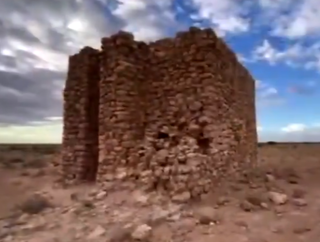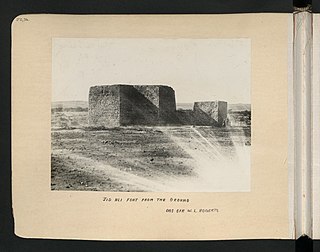Cabdulle Kudaad | |
|---|---|
Town | |
| Coordinates: 2°57′N45°43′E / 2.950°N 45.717°E | |
| Country | |
| Region | Hiran |
| Time zone | UTC+3 (EAT) |
Cabdulle Kudaad is a town located in the central Hiran region of Somalia. [1]
Cabdulle Kudaad | |
|---|---|
Town | |
| Coordinates: 2°57′N45°43′E / 2.950°N 45.717°E | |
| Country | |
| Region | Hiran |
| Time zone | UTC+3 (EAT) |
Cabdulle Kudaad is a town located in the central Hiran region of Somalia. [1]
Raaso is a city in the Somali Region of Ethiopia. Situated in the Afder Zone, it is the most populated city in the region.
Aw Jama Omar Issa commonly known as Aw Jaamac, was a Somali scholar, historian and collector of oral literature of Somalia. He wrote the first authoritative study of Dervishes, the polity of monarch Diiriye Guure.

Muḥammad Ibn Abdallāh Ibn Hassan was a Somali, scholar, poet, religious, political, and military leader who founded and headed the Dervish movement, which led a holy war against British, Italian and Ethiopian intrusions in the Somali Peninsula. He was famously known by the British Empire as the ''Mad Mullah". In 1917, the Ottoman Empire referred him as the "Emir of the Somali People". Due to his successful completion of the Hajj to Mecca, his complete memorization of the Quran and his purported descent from the Islamic prophet Muhammad, his name is sometimes preluded with honorifics such as Hajji, Hafiz, Emir, Sheikh, Mullah or Sayyid. His influence led him to being regarded the “Father of the Somali People”.
General Daud Abdulle Hirsi was a Somali police and military officer, who went on to become first Commander of the Somali Armed Forces.
Dodai, also called Doddi or Dodhais, is a border-locality in the Sool region of Somaliland, opposite to Geida Debabo which is across the border in the Garowe District in Somalia.

Taleh is a historical town in Sool region of Somalia. The town served as the capital of the pre-independence Dervish movement.

Abdiweli Hersi Abdulle (Indhoguran), Somali: Cabdiwali Xirsi Cabdulle 'Indhoguran'; born 1969) is a Somali politician and was held minister of electricity and power generation of the Transitional National Government (TNG) of Somalia, and Minister of Labor, Youth and Sports for the Puntland region. From 1992 to 1997 he was minister of labour and social affairs of Somali region state of Ethiopia and head of social affairs sector. From 1994 to 1997 he was Head of Disaster Prevention and Preparedness committee of Somali regional state of Ethiopia and member of parliament.
Goryasan, also known as Goriasan was the headquarters of the Dervish movement in 1910, and is contemporarily a ruin and vestige located seven kilometers to the northeast of the town of Taleh. It was the former location of the Xarun in 1910 after it moved from Gaulo, which is also in the Taleh District. There are also other Darawiish heritage sites immediately to the east of Taleh such as Halin, and Dhummay which is halfway between Taleh and Halin, both of which used to have Darawiish fortifications. The year when the Darawiish xarun was settled at Goryasan was known as the Xaaraamacune era.

Somali architecture is the engineering and designing of multiple different construction types such as stone cities, castles, citadels, fortresses, mosques, temples, aqueducts, lighthouses, towers and tombs during the ancient, medieval and early modern periods in Somalia and other regions inhabited by Somalis, as well as the fusion of Somalo-Islamic architecture with Western designs in contemporary times.
Burane is a District in the northwestern Shabeellaha Dhexe province of Somalia.

The Muse clan is a Somali clan. Group members live in Somaliland, Ethiopia, Djibouti, and Yemen.

Muse Hassan Sheikh Sayid Abdulle, also known as Muse Sayyid Hassan or Mussa Hassan Sheikh Abdulle, is a senior Somali military figure and politician. He has been the acting president of Somalia and interim speaker of the Federal Parliament. He is Somalia's ambassador to Italy.
Gumburka Cagaare, or simply Cagaare is a town in the Somali Region of Ethiopia, near the border with Somalia.
Gudban is a 1907 poem and oration by Muhammad Abdullah Hassan, the leader of the darawish, announcing his policy declaration. It was one of many orations and poems which were salvaged after Maxamed Aadan Sheekh, Somalia's Minister of Culture ordered for them to be salvaged, but only permitted poems which were memorized by former members of the Haroun. The Gudban poem in particular, was transmitted in 1957 by the darawish veteran Garaad Soofe Durraan. The darawish referred to the poem as Gaala leged, which could be translated from Somali to English as Defeating the Infidels. Non-darawish Somalis referred to the poem as Gudban, which is a Somali word that literally means "moving across". This was in reference to how during the year it was released, the darawish moved back into their old territories in the Nugaal Valley.
Haji Yusuf Barre was the commander at the battle of Jidbali, the largest and deadliest engagement between the dervishes and the British empire in the Horn of Africa. Haji Yusuf Barre is also noted for being the person whom held the last stand at the Dhulbahante garesa at Taleh, in the aftermath of the bombings at Taleh wherein Taleh became the first place to be targeted in Africa through aerial attacks.
Ciid or 'Iid is an archaic native geographic name for the land between the region of Mudug and the Nugaal Valley, roughly congruous with the northern Bookh district in Ethiopia. As such, Ciid constitutes the tripoint of the two former colonial powers Britain and Italy, as well as neighboring Ethiopia, thus situating Mudug immediately southeast of Ciid, the Nugaal Valley immediately north of Ciid, and Haud to the west of Ciid. One historian referred to it as the syrup-colored land and it is today embodied by Ciid towns such as Futoxum, Magacley, Qoriley, Biriqodey, Beerdhiga and Gumburka Cagaare.

Dalyare fort is an open-top Dhulbahante garesa of the Darawiish era which was ordered built by the Dervish as a strategy for countering the colonization efforts of the Europeans. The building is located in the Nugaal Valley a few miles east of Las Anod. The purpose of the Dalyare fort was to serve as a refuge and escape route for Darawiish retreating from colonial forces who intend to head south towards the Shabelle River. However, retrospectively, some analysts have described the building as a setback to the previous tactic of maneuverability on the part of the Darawiish. Cali Jalax was the builder. The native Darawiish referred to the building as Sool-Daryare. On the other hand, the colonialists who launched attacks against the Darawiish referred to the building as Dariali.

Jidali fort was a cross-shaped fort of the Dervish era located in the town of Jidali in Sanaag, Somalia and is also the first place in Africa to be bombed via aerial bombardment by a tally of four sorties of De Havilland DH-9's on 21 January 1920. An April 1920 letter between the Sayid and Italian-Somali governor Giacomo De Martino states that the Dervishes built a total of twenty-seven forts which are described as Dhulbahante garesas.
Afbakayle is a 1905 poem by the Sayid Mohammed Abdullah Hassan made while he was in exile. The poem is a political poem which primarily deals with the topic of treachery and two-facedness, known as jeesjeesnimo in Somali. According to scholar Abdulqadir Sheik Abdi, the poem is a direct denunciation of those described as "friendly tribes" by the British, whom he describes as the Sayid's sworn arch-enemies. A repeated mantra in the poem used to describe the Somali colonial collaborators is naga ajoon waayey, meaning won't even flinch.

The Baho Nugaaleed the leader baho nugaaleed Khair Abdi [Qayaad], is a division of Somali clan that is part of the Dhulbahante clan-family. The primary homeland of these clans include the regions of Sool and Sanaag And Dmco Doollo DDS in SSC KHAATUMO, the Lower Juba region in Somalia and the Dollo Zone in Ethiopia. The Bah Nugaaleed are composed of three major sub-groups Qayaad Majors in accordance with their locality in the SSCD regions. These groups are Khair Abdi [Qayaad] the Hayaag Yaxye ugaasyo the Reer Aymeed and Reer Nugaaleed _Reer hawud [KhAIR ABDI]Qayaad).